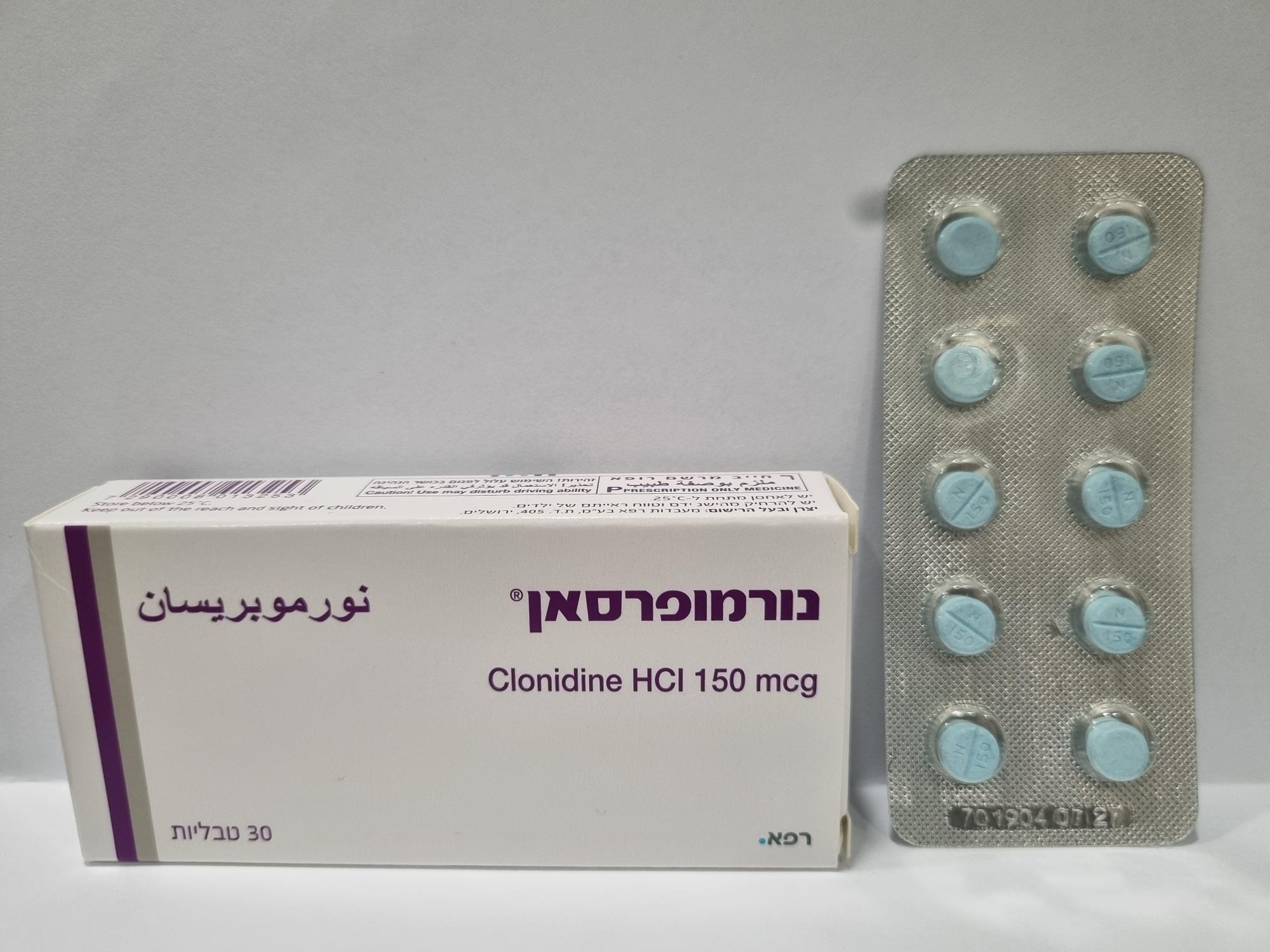Quest for the right Drug

נורמופרסאן NORMOPRESAN (CLONIDINE HYDROCHLORIDE)
תרופה במרשם
תרופה בסל
נרקוטיקה
ציטוטוקסיקה
צורת מתן:
פומי : PER OS
צורת מינון:
טבליה : TABLETS
עלון לרופא
מינוניםPosology התוויות
Indications תופעות לוואי
Adverse reactions התוויות נגד
Contraindications אינטראקציות
Interactions מינון יתר
Overdose הריון/הנקה
Pregnancy & Lactation אוכלוסיות מיוחדות
Special populations תכונות פרמקולוגיות
Pharmacological properties מידע רוקחי
Pharmaceutical particulars אזהרת שימוש
Special Warning עלון לרופא
Physicians Leaflet
Posology : מינונים
4.2 Posology and method of administration Normopresan Tablets are for oral administration only. Adults: Treatment of hypertension requires regular medical supervision. The dose of Normopresan must be individualized according to the patient's blood pressure response. As an initial daily dose in mild to moderate forms of hypertension, 75 mcg (half a tablet) to 150 mcg (one tablet) twice daily are sufficient in most cases. After a period of 2-4 weeks the dose may be increased if necessary until the desired response is achieved. Usually doses above 600 mcg per day do not result in a further marked drop in blood pressure. In severe hypertension it might be necessary to increase the single dose further to 300 mcg; this could be repeated up to three times daily (900 mcg). Patients changing to treatment with Normopresan should have their existing therapy reduced gradually, while Normopresan is added to the regimen. Although concurrent use of a thiazide diuretic may be a valuable adjuvant in many hypertensive patients, when administered alone, Normopresan will, in many cases, provide full control of blood pressure. Nevertheless, the use of a diuretic may aid in overcoming tolerance to clonidine and permit reduction of clonidine dosage. Normopresan may be added to an existing antihypertensive regimen where blood pressure control has not been satisfactorily achieved. If side-effects with existing therapy are troublesome the concomitant use of Normopresan may allow a lower dose of the established regimen to be employed. Patients changing treatment should have their existing therapy reduced gradually whilst Normopresan is added to their regimen. Patients undergoing anaesthesia should continue their clonidine treatment. No specific information on the use of this product in the elderly is available. Clinical trials have included patients over 65 years and no adverse reactions specific to this age group have been reported. Paediatric Population: There is insufficient evidence for the application of clonidine in children and adolescents younger than 18 years. Therefore the use of clonidine is not recommended in paediatric subjects under 18 years. Patients with renal and hepatic impairment: In patients with renal and hepatic insufficiency careful monitoring is required and the dosage must be adjusted appropriately, according to the individual antihypertensive response. Since only a minimal amount of clonidine is removed during routine hemodialysis there is no need to give supplemental clonidine following dialysis. Renal impairment: Dosage must be adjusted − according to the individual antihypertensive response which can show high variability in patients with renal insufficiency, careful monitoring is required (See Section 4.4) − according to the degree of renal impairment

שימוש לפי פנקס קופ''ח כללית 1994
Hypertension
תאריך הכללה מקורי בסל
01/01/1995
הגבלות
תרופה שאושרה לשימוש כללי בקופ'ח
מידע נוסף
